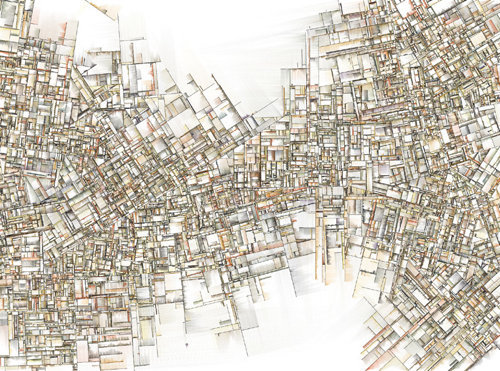I have always been fascinated by stars in general – their formation, life cycle, position relative to each other, brightness, and much more. Thanks to wikipedia, I learned that “star formation is the process by which dense regions within molecular clouds in interstellar space, commonly referred to as ‘stellar nurseries’, collapse into spheres of plasma to form stars”. This following video is a 3D animation, made by Matthew Bate, models the collapse and fragmentation of a 500 solar mass cloud that produce more than 1250 stars.
http://www.astro.ex.ac.uk/people/mbate/Cluster/cluster3d.html
I was introduced to generative art when I first learned about the company Nervous System (n-e-r-v-o-u-s.com), where they use computer simulation to generate design and to create interesting products. They use a lot of biology-based simulations, and the one I find most interesting is their computer simulation inspired by the cell cycle. I think it is very cool to see familiar patterns that you might see in everyday life being used to produce something aesthetic. I want to create something based on common patterns, that might be overlooked, to make tangible products that look beautiful.
I still remember my first flight to Pittsburgh, and the moment I looked out the window to see the city: the formation of streets, houses, cars, and the green area. I must really have been drawn to what I saw because I can still remember it until now. I love seeing the city from that angle, where you see how the city is planned – seeing the big picture of an urban life. I think it should be interesting to use city plans, from different cities and countries, to generate art. Grid planning is one city planning methods that I want to look into.
(Source: http://www.noupe.com/inspiration/generative-digital-art-tutorials-and-inspiration.html)
